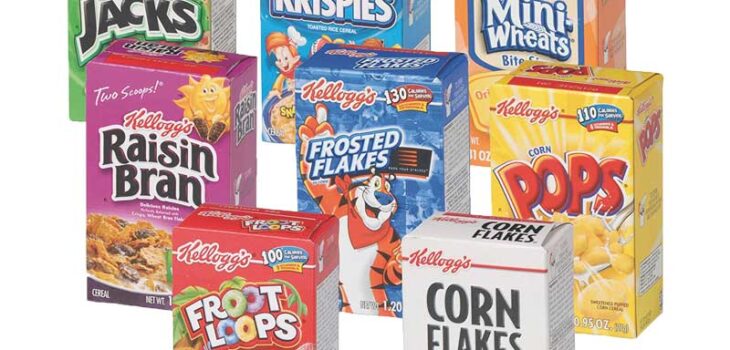 Business
Business
Mastering Cereal Box Measurements ,Simple, Reliable Techniques
- by raza
Why Box Dimensions Really Matter
Whether you’re developing your own breakfast cereal or just exploring packaging basics,
understanding how to correctly measure a cereal box is more important than most people
realize. Accurate measurements influence everything from visual design and retail
presentation to logistics and production costs. For businesses using minimalist
plain cereal box packaging , getting the size right is crucial. A properly sized box
maintains freshness, minimizes excess material, and gives your product a polished,
professional appearance. Here’s how to measure a cereal box the right way—even if
you’ve never done it before.
Measuring a Cereal Box Correctly
Measuring a box might seem straightforward, but it’s easy to mix up the dimensions if
you don’t follow a clear system. Use this guide for accurate, consistent results.
1. Position the Box Properly
Place the box on a flat,stable surface with the front facing you,the side with the logo
or label. This helps establish a consistent orientation.
2. Determine the Width
Use a ruler or tape to measure from the left edge to the right edge of the front face.
This gives you the width.
3. Find the Height
Next, measure from the bottom of the box to the top edge. This tells you how tall the
box stands when upright on a shelf.
4. Measure the Depth (Length)
Finally, measure from the front of the box to the back. This is the depth, sometimes
also called length depending on context.
Quick Tip: Always stick to this order,Width × Height × Depth—to avoid confusion when
sharing specs with your supplier or packaging team.
Example: Typical Dimensions of a Cereal Box
While sizes differ between brands and product types, here’s a standard measurement for
a commonly seen family-size cereal box:
Width: 7.75 inches
Height: 11.25 inches
Depth: 2.375 inches
This size usually holds between 14 and 18 ounces of cereal. Smaller boxes, like single
-serving or travel-size, are typically less than 8 inches in height and thinner overall.
How Proper Box Sizing Can Save Time and Money
Many businesses overlook how significantly box size impacts operations. Here’s why
getting the dimensions right pays off:
✅ More Efficient Shipping
Smaller, properly fitted boxes reduce shipping volume and weight, helping lower
transportation costs.
✅ Improved Shelf Appearance
Uniform packaging helps your products look clean and organized on store shelves—
essential for catching consumer attention.
✅ Better Product Freshness
A well-fitting box secures the internal cereal bag, keeping air out and freshness in.
✅ Sustainable Choices
Using accurate box sizes for frog cereal box packaging helps reduce excess materials,
making your product more eco-friendly and cost-effective.
Finding the Best Box Size for Your Product
There’s no universal solution—your packaging size should reflect your product type and
audience.
Kids vs. Adults
Products designed for kids (like playful cereals featuring a frog mascot) typically
come in smaller,more colorful boxes.Adult cereals often use taller boxes with subtle,
health-focused designs.
Inner Bag Considerations
Always make sure the internal cereal pouch fits snugly within the box,too much extra space
can lead to product shifting or damage.
Plain vs. Custom Graphics
If you’re leaning toward a simple, no-frills design, plain packaging can be very effective.
Just be sure to use strong visual elements like high-contrast text or color blocks to
stand out.
Advanced Tips for Designing Custom Cereal Boxes
Thinking of creating a custom box from scratch? Keep these tips in mind:
Stick with common box dimensions unless you have a unique need.
Reserve space for nutritional information, barcodes, and legal text.
Planning to include giveaways like toys? Factor in extra compartments or inserts.
Ensure your design keeps brand mascots or key artwork fully visible from the front.
Mistakes to Avoid When Measuring Cereal Packaging
Even seasoned professionals sometimes slip up. Watch out for these common errors:
Measuring the box after it’s been filled , always measure before packing.
Confusing depth with width ,this is a common issue. Use the W×H×D formula to stay
consistent.
Ignoring courier or shipping size restrictions ,some delivery services limit box
dimensions.
Skipping the prototype stage ,always test-print at least one box before placing a
bulk order.
Wrapping It Up: Details That Make a Difference
Precise measurements might seem like a small detail, but they have a big impact.
Whether you’re creating minimalist plain cereal packaging or designing something
bold and playful, it all starts with knowing your box dimensions. Proper sizing
helps protect your product, enhances your branding, reduces waste, and lowers
costs. In a crowded marketplace, getting these little things right can give you
a major edge. So, grab a cereal box, follow the steps above, and create
packaging that works as hard as your product








